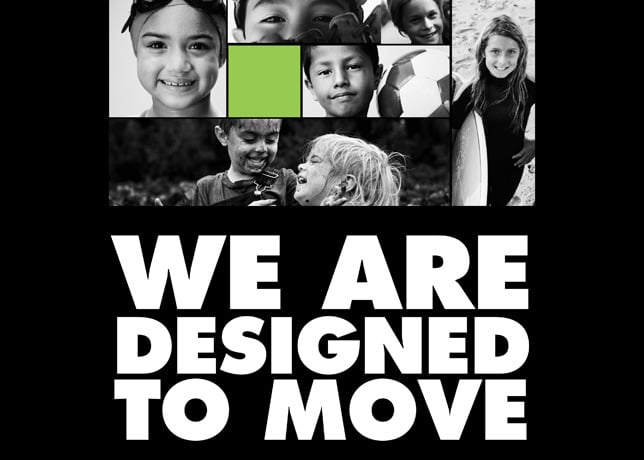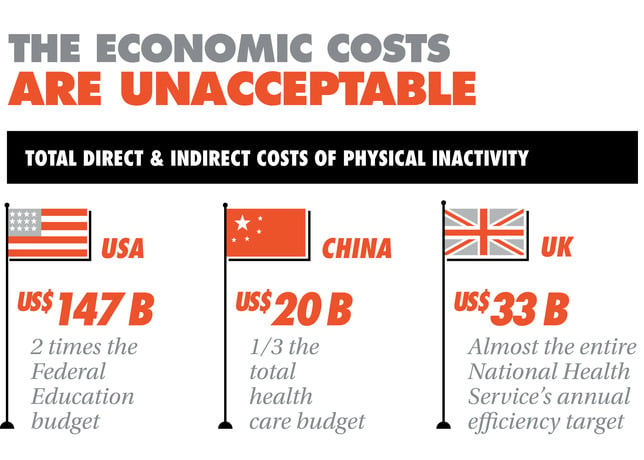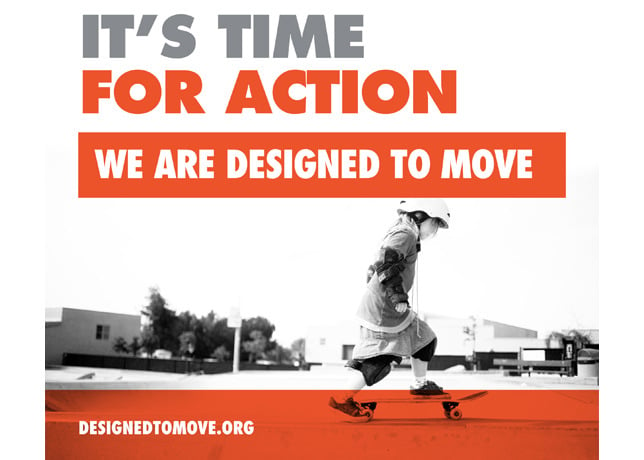
A new report titled “Designed to Move” reveals a growing epidemic of physical inactivity threatening the social and economic prosperity of the world. Presented by Nike, The American College of Sports Medicine, The International Council of Science & Physical Education and several other expert organizations, the report does two things: Consolidates the evidence for urgent action and lays out a simple action agenda to solve it.
“Designed to Move” details how society has engineered movement out of daily life, leading today’s children to face a shorter life expectancy than their parents. The report calculates that if no action is taken, half of the Chinese and American populations will be physically inactive by 2030 along with a third of British and Brazilian populations, totaling 1 billion people. The report also outlines recommendations for how governments, civil societies, corporations, and individuals, among others, can contribute to the solution.
Nike Brand President Charlie Denson joined world track & field star Allyson Felix on stage Sunday at the Clinton Global Initiative in New York City to spotlight the issue and to begin rallying partners in the field of physical activity.
“Nike was founded on the power of sport and its ability to unleash human potential,” Denson said. “Unfortunately, in a relatively short period of time, we have seen physical activity designed and engineered out of our lives with dramatically underestimated human, social and economic impacts.”
Key call-outs from the report include:
- The top 10 killers in the 50 highest-income countries are all connected to a lack of physical inactivity.
- More deaths are now attributed to physical inactivity than smoking (5.3 million vs. 5 million respectively).
- The global cost of the five leading non-communicable diseases totaled $6.2 trillion in 2010, all linked to physical inactivity.
Central to the study is a finding that the first 10 years of a child’s life provide a critical window for creating a lifelong commitment to physical activity. With children dropping out of physical activity earlier in life, European children are 50 percent less active by age 15 than they were at age 9; in the U.S., children are 75 percent less active at age 15 than at age 9.
Nike’s goal is to not only change the conversation, but help collaborate with others to create a world where physical activity, play and sports are highly valued and an expected, enjoyable part of life.
The unifying vision in the report is twofold: Create early positive experiences for children in sports and physical activity, and integrate physical activity into everyday life.
“By committing to create a healthier future, we believe there is an opportunity for all of us to think differently and work together to help reverse those trends that continue to prevent children around the world from having access to sport,” Denson said. “We can break cycles of physical inactivity where they are deeply entrenched and where they are beginning to emerge.”
For more information and to see the full study, please visit www.designedtomove.org.


